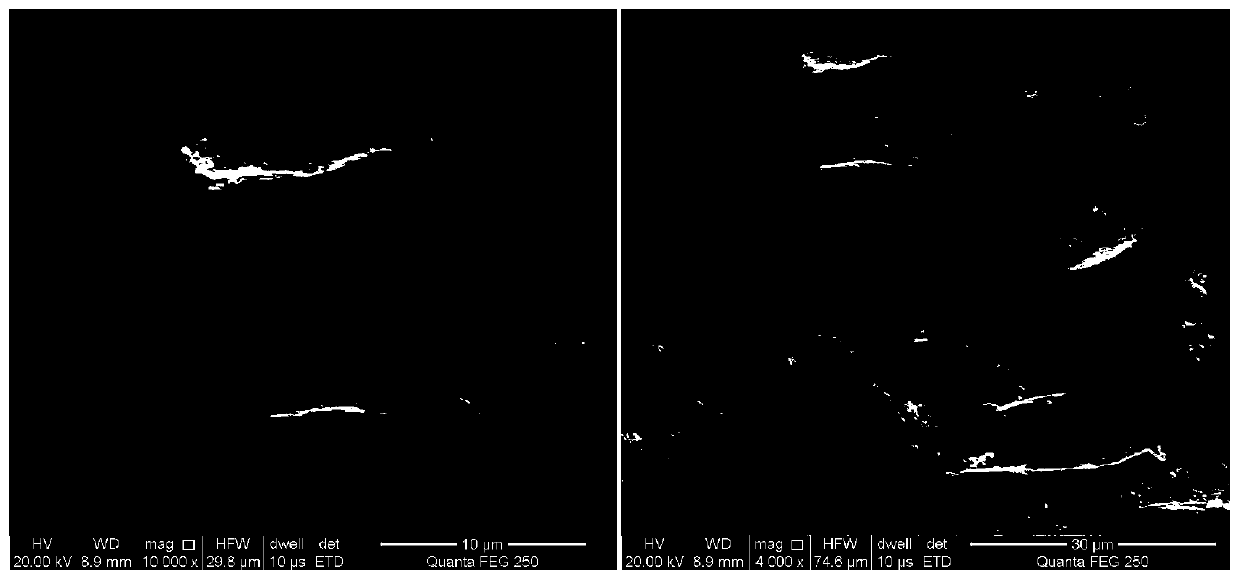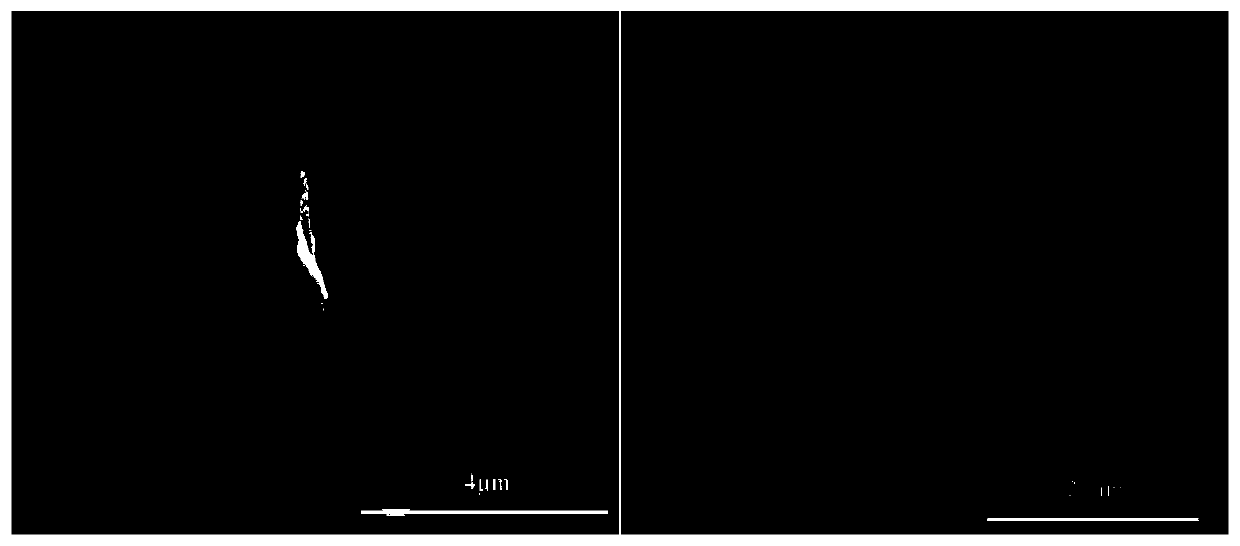Graphene reinforced ceramic matrix composite material and preparation method thereof
A composite material and graphene technology, applied in ceramic forming machines, manufacturing tools, etc., can solve problems such as easy agglomeration and inconspicuous toughening effect
- Summary
- Abstract
- Description
- Claims
- Application Information
AI Technical Summary
Problems solved by technology
Method used
Image
Examples
Embodiment 1
[0038] Embodiment 1 (graphene 0.5vol%%)
[0039] Take graphene, bisphenol A epoxy acrylate (BAEA), trimethylolpropane triacrylate (TMPTA), tripropylene glycol diacrylate (TPGDA), isobornyl methacrylate (IBMA), initiator Diphenyl (2,4,6-trimethylbenzoyl) phosphine oxide (TPO), placed in a high-speed vacuum stirring defoamer machine and stirred evenly at a speed of 1800 rap for 3 minutes. Then use ultrasonic vibration to solve the problem of graphene agglomeration, power 100%, time 90min, degassing to obtain a premix, add powder ZrO to the premix 2 , PVP is stirred evenly in a high-speed vacuum stirring and defoaming agent machine, the speed is 1800, and the time is 3 minutes. Mix well to get the ceramic slurry,
[0040] The addition amount of each component in the ceramic slurry is as follows:
[0041]
[0042] Use the component slurry to perform light-curing molding. During the curing molding process, the thickness of the slice layer is 20 μm, and the time is 20 s;
[0...
Embodiment 2
[0044] Embodiment 2 (graphene 0.125vol%)
[0045] Take graphene, bisphenol A epoxy acrylate (BAEA), trimethylolpropane triacrylate (TMPTA), tripropylene glycol diacrylate (TPGDA), isobornyl methacrylate (IBMA), initiator Diphenyl (2,4,6-trimethylbenzoyl) phosphine oxide (TPO), placed in a high-speed vacuum stirring defoamer machine and stirred evenly at a speed of 1800 rap for 3 minutes. Then use ultrasonic vibration to solve the problem of graphene agglomeration, power 100%, time 90min, degassing to obtain a premix, add powder ZrO to the premix 2 , PVP is stirred evenly in a high-speed vacuum stirring and defoaming agent machine, the speed is 1800, and the time is 3 minutes. Mix well to get the ceramic slurry,
[0046] The addition amount of each component in the ceramic slurry is as follows:
[0047]
[0048]
[0049] The composition slurry is used for photocuring molding. During the curing molding process, the thickness of the slice layer is 20 μm, and the time is ...
Embodiment 3
[0050] Embodiment 3 (graphene 0.25vol%)
[0051] Take bisphenol A epoxy acrylate (BAEA), trimethylolpropane triacrylate (TMPTA), tripropylene glycol diacrylate (TPGDA), isobornyl methacrylate (IBMA), diphenyl (2 , 4,6-trimethylbenzoyl) phosphine oxide (TPO), graphene stirring, defoaming to obtain a premix, ultrasonic dispersion and deagglomeration, adding powder ZrO to the premix 2 , PVP and mix to obtain ceramic slurry.
[0052] The addition amount of each component in the ceramic slurry is as follows:
[0053] BAEA: 2.00g
[0054] TMPTA: 2.00g
[0055] TPGDA: 3.00g
[0056] IBMA: 4.50g
[0057] TPO: 0.2000g
[0058] ZrO2: 30.0000g
[0059] PVP: 0.1500g
[0060] Graphene 0.027g
[0061] The composition slurry is used for photocuring molding. During the curing molding process, the thickness of the slice layer is 50 μm, and the curing time is 20s. Degreasing-sintering is carried out in an air atmosphere. / min to 300°C, keep warm for 120min, 1.0°C / min to 500°C, keep wa...
PUM
| Property | Measurement | Unit |
|---|---|---|
| Fracture toughness | aaaaa | aaaaa |
| Fracture toughness | aaaaa | aaaaa |
| Fracture toughness | aaaaa | aaaaa |
Abstract
Description
Claims
Application Information
 Login to View More
Login to View More - R&D
- Intellectual Property
- Life Sciences
- Materials
- Tech Scout
- Unparalleled Data Quality
- Higher Quality Content
- 60% Fewer Hallucinations
Browse by: Latest US Patents, China's latest patents, Technical Efficacy Thesaurus, Application Domain, Technology Topic, Popular Technical Reports.
© 2025 PatSnap. All rights reserved.Legal|Privacy policy|Modern Slavery Act Transparency Statement|Sitemap|About US| Contact US: help@patsnap.com



